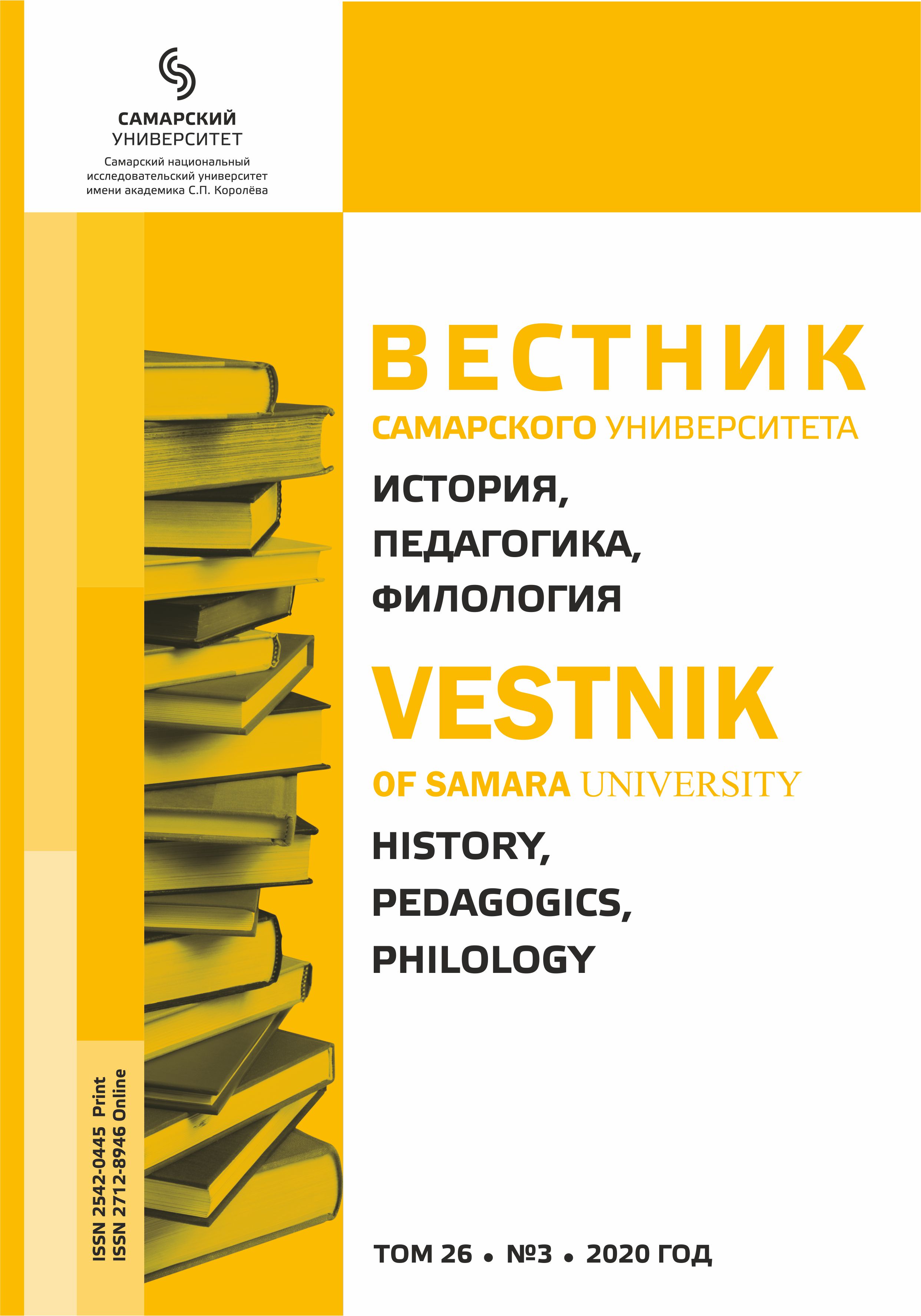Типы дериватов с префиксом mega- в синхронно-диахроническом описании
- Авторы: Шаповаленко Е.В.1
-
Учреждения:
- Балтийский федеральный университет имени Иммануила Канта, г. Калининград, Российская Федерация
- Выпуск: Том 26, № 3 (2020)
- Страницы: 95-100
- Раздел: Статьи
- URL: https://journals.ssau.ru/hpp/article/view/8192
- DOI: https://doi.org/10.18287/2542-0445-2020-26-3-95-100
- ID: 8192
Цитировать
Полный текст
Аннотация
В статье описываются дериваты с префиксом mega- в английском языке с точки зрения типов реализуемых в них словообразовательных значений. Изучение функционирования компонента древнегреческого происхождения в синхронно-диахронической перспективе позволило установить причины и описать механизмы его дальнейших деривационных преобразований на материале английского языка. На почве заимствующего языка прилагательное μέγας подвергается межуровневой конверсии и используется в качестве префиксального элемента в составе разнообразных дериватов. Генетически присущая компоненту квантитативная семантика реализуется в составе терминологических единиц, в которых префикс выполняет роль терминоэлемента. В других дискурсивных областях функция количественной идентификации обозначаемого сочетается с функцией оценки. В дериватах, относящихся к научно-популярному или коммерческому дискурсу, префикс mega- выполняет функцию выделения объекта из ряда однотипных и маркирует его как исключительный феномен. Использование в процессе анализа методики профилирования позволило описать внутренний механизм формирования словообразовательных значений производных с префиксом mega-. С помощью контекстуального анализа и анкетирования информантов – носителей английского языка – осуществлена дифференциация между префиксами mega- и super-, используемыми в функции оценки. Установлено, что в английских дериватах префикс mega- маркирует наивысшую степень градации качества характеризуемого объекта и присоединяется к основам, референты которых способны оцениваться на основе количественных признаков. Присоединение префикса super- не связано с наличием в значении корневой морфемы параметрических характеристик, что обусловливает его оценку носителями языка как маркера меньшей степени проявления оцениваемого качества.
Об авторах
Е. В. Шаповаленко
Балтийский федеральный университет имени Иммануила Канта, г. Калининград, Российская Федерация
Автор, ответственный за переписку.
Email: morenov@ssau.ru
ORCID iD: 0000-0002-7045-4310
аспирант, Институт гуманитарных наук, Балтийский федеральный университет имени Иммануила Канта
Список литературы
- Chrisomalis 2010 – Chrisomalis S. Numerical Notation: A Comparative History. Cambridge: Cambridge University Press, 2010. URL: http://phrontistery.info/numbers.html.
- Dokulil 1962 – Dokulil M. Tvoření slov v češtině. Praha, 1962. T. 1. S. 191–219.
- Gutschmidt 2003 – Gutschmidt K. Словообразовательные новации (преморфемные дериваты) в славянских языках с точки зрения когнитивной лингвистики // Procesy innowacyjne w językach słowiańskich. Prace Slawistyczne, 114, SOW, Warszawa, 2003. S. 63–76.
- Hamawand 2011 – Hamawand Z. Prefixes of Degree in English: A Cognitive-Corpus Analysis // Open Journal of Modern Linguistics, 2011, 01(02). P. 13–23. doi: 10.4236/ojml.2011.12003.
- Langacker 1987 – Langacker R. Foundations of cognitive grammar. Vol. 1. Theoretical prerequisites. Stanford: Stanford University Press, 1987. 516 p.
- Lehmann 1999 – Lehmann V. Sprachliche Entwicklung als Expansion und Reduktion. Anstatt A. (Hg.) Entwicklungen in slavischen Sprachen. München, 1999, S. 169–254. URL: https://ru.scribd.com/document/308889973/Sprachliche-Entwicklung-Als-Expansion-Und-Reduktion-1999.
- Бабич 1991 – Бабич С.Г. (1991) Изменение семантической структуры деривата в процессе словообразования // Русское языкознание. Киев, 1991. Вып. 22. С. 123–127.
- Земская 1992 – Земская Е.А. Словообразование как деятельность. Москва: Наука, 1992. 221 с.
- Малинович 2013 – Малинович M.В. Количество. Качество. Причинность: взаимодействие лингвофилософских категорий // Вестник Иркутского государственного лингвистического университета. 2013. № 4 (25). С. 227–233. URL: https://cyberleninka.ru/article/n/kolichestvo-kachestvo-prichinnost-vzaimodeystvie-lingvofilosofskih-kategoriy; https://www.elibrary.ru/item.asp?id=21098206.
- Мышак 2018 – Мышак Е.А. Греко-латинские префиксы в англоязычной терминологии биотехнологии // Studia Humanitatis. 2018. № 2. C. 19. URL: https://www.elibrary.ru/item.asp?id=35277635; http://st-hum.ru/content/myshak-ea-greko-latinskie-prefiksy-v-angloyazychnoy-terminologii-biotehnologii.
- Шкапенко, Шаповаленко 2020 – Шкапенко Т.М., Шаповаленко Е.В. Семантико-прагматическая эволюция префикса латинского происхождения super (по данным польского и английского языков) // Научный диалог. 2020. № 2. С. 161–177. doi: 10.24224/2227-1295-2020-2-161-177.
Дополнительные файлы













